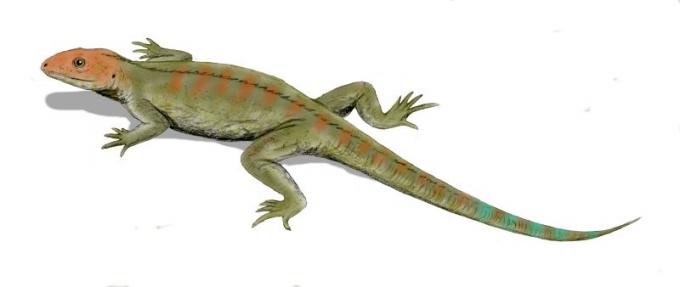Reptilia (Reptiles)
Reptiles (class Reptilia) are members of a class of air-breathing, ectothermic (cold-blooded) vertebrates which are characterized by laying shelled eggs (except for some vipers and constrictor snakes that give live birth), and having skin covered in scales and/or scutes. They are tetrapods, either having four limbs or being descended from four-limbed ancestors. Modern reptiles inhabit every continent with the exception of Antarctica, and four living orders are currently recognized: Crocodilia (crocodiles, gavials, caimans, and alligators); Sphenodontia (tuataras from New Zealand):
Squamata (lizards, snakes, and worm lizards): and Testudines (turtles, terrapins and tortoises)
Reptiles originated around 320-310 million years ago during the Carboniferous period, having evolved from advanced reptile-like amphibians that became increasingly adapted to life on dry land. Unlike amphibians, reptiles do not have an aquatic larval stage. As a rule, reptiles are oviparous (egg-laying), although certain species of squamates are capable of giving live birth. This is achieved by either ovoviviparity (egg retention) or viviparity (birth of offspring without the development of calcified eggs). Many of the viviparous species feed their fetuses through various forms of placenta analogous to those of mammals, with some providing initial care for their hatchlings. Extant reptiles range in size from a tiny gecko, Sphaerodactylus ariasae, which can grow up to 1.7 cm (0.6 in) to the saltwater crocodile, Crocodylus porosus, which may reach 6 m in length and weigh over 1,000 kg.The study of reptiles and amphibians is called herpetology.
Source: http://en.wikipedia.org/wiki/Reptilia | ||
Virtual museum of the Czech Geological Survey, www.geology.cz, (C) Czech Geological Survey, 2011, v.0.99 [13.12.2011]


![[ENG]](img/vlajka-cr.gif) Česky
Česky 

